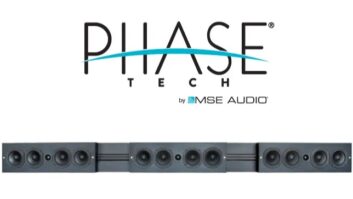Custom A/V installers who have diversified into security, low-voltage lighting and other disciplines have begun to consider computer networking and shared broadband access as their next business opportunity.
The new disciplines are highly profitable if done right, some diversification advocates contend. But even if the profit margins turn out to be meager, some installers contend the new disciplines will, at the very least, position their companies as one-stop shops with a competitive advantage over other installers in attracting new business. “It’s just another part of providing the electronic lifestyle,” said Audio/Video Entertainment owner Sean Fields.
Installers who diversify into broadband access and PC networking will position themselves as the “chief technology officer” for a customer’s home, said Audio Advisors owner Jeff Hoover.
Demand for residential broadband service is growing as DSL, cable-modem and wireless options proliferate, said market research company Cahners In-Stat, owned by TWICE parent Cahners Business Information. (See chart, p. 28.)
The potential for custom installers will grow with it, particularly if it’s packaged with structured-wiring solutions that include PC-network capabilities, such as those offered by UStec, installers pointed out.
In part, the opportunity exists because cable companies limit their installation services. In his South Florida market, for example, Hoover said the cable company connects cable modems to only one PC and refuses to network PCs to allow for shared Internet access.
Select DSL providers, on the other hand, will network a home’s PCs, said Audio/Video Entertainment’s Fields, but even so, opportunity still exists for installers because “we bring new business to the DSL reseller. We have access to the buyer when he’s building a house, and the customer has the choice of cable, DSL or satellite.”
Joe Piccirilli, chairman of CEDIA’s home networking council, agreed and said, “We have the key that opens the front door. Home entertainment opens the door to broadband access in the home. We can do the last 10 feet. Cable and [many] DSL companies install one modem and connect it only to one PC. They don’t have the capability to create a home network.”
Although the DSL and cable companies “have the potential to be your competitor,” Piccirilli noted, “if we are at the forefront of knowledge, we are better positioned to access the consumer and gain his confidence.”
As multiple broadband providers begin to compete in a geographic market, installers will be able to leverage their position to negotiate compensation packages with broadband service providers, Piccirilli and Hoover agreed.
Audio/Video Entertainment, in fact, is close to concluding an agreement with a local DSL reseller to obtain a commission and ongoing residuals. A handful of other CEDIA members have established relationships directly with cable companies or their subcontractors, Hoover noted.
CEDIA itself is investigating the possibility of brokering national or regional compensation deals between its members and broadband companies, Piccirilli added.
Hoover expects broadband companies will grow more willing to pony up in anticipation of competition from two-way satellite broadband services such as Hughes Network Systems.
“When there are choices [in broadband gateways], the cable or DSL companies will share the revenue,” Hoover said.
In the case of Audio/Video Entertainment, such competition would be welcome. “The local cable company wanted us to do the installation for them and network the PCs, but they paid so little, we declined,” Fields said.
Even if some broadband suppliers don’t compensate installers in their markets, “CEDIA dealers can help consumers make the choice [of cable, DSL or satellite service] and network the choice if they don’t offer all three services,” Hoover said.
“The goal for now is to use DSL, etc. to create value, to maximize its utility, even if we don’t get recurring revenues or a margin,” said Piccirilli.
In the meantime, said Fields, installers could generate additional revenue by selling a warranty contract to maintain the PC network in the same way that some installers sell warranties on their A/V installs.
Even without compensation or warranty programs, installing a PC network and shared broadband access can be highly profitable, some installers said. They cited the perceived high value to consumers and the efficiency of adding PC-network capabilities to a structured-wiring installation.
“Adding data is very profitable because it’s an efficient use of the installer’s time,” said Hoover. “Pulling a dedicated [100-Mbps] CAT 5 cable for data requires almost no extra time because you can piggyback them with CAT 5 voice lines.”
Another installer said he pulls more expensive CAT 5e to deliver data at speeds up to 350 Mbps, compared to CAT 5’s 100 Mbps. He charges 19 cents per foot for CAT 5e, which costs him 10 cents per foot. CAT 5 would cost about 6 cents a foot.
For this installer, the profit potential doesn’t stop there. He makes a 40-point margin on the network router, 100Base-T network hub and PC network cards. That margin raises the customer’s cost well above the prices offered by large computer merchants, but “people are willing to pay to make it work properly,” he said. Wholesale prices on a four-station hub run about $140, with a router running about $100, the dealer said.
The company’s standard labor charge of $55 per hour applies to the pulling of wire and the installation of a structured wiring enclosure that might also incorporate video- and phone-distribution modules.
The labor charge hits $80 per hour for anything that’s computer-network-related. That includes the installation of the hub, router and broadband modem in or near the structured-wiring enclosure by the company’s computer technician. It also applies to the installation of the PCs’ network cards and the time it takes to ensure proper operation.
“When it involves a computer network, we charge over the standard labor rates. Customers will pay for a no-hassle install,” the installer said. If the customer is willing, the company will even buy and mark up the PCs.
Another option is to prewire a home for PC networking and shared broadband access, creating an opportunity to return to the house at a later date if the consumer decides to implement a network, said Fields. “It’s a chance to come back and educate people about new products and services.”












